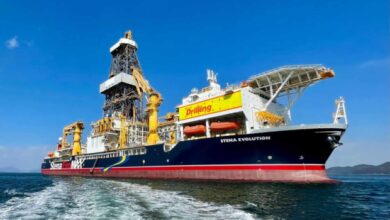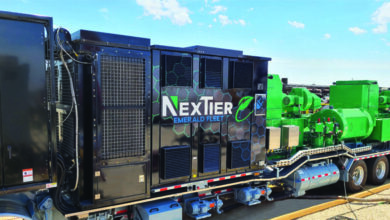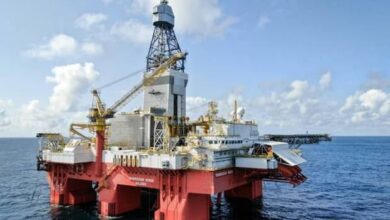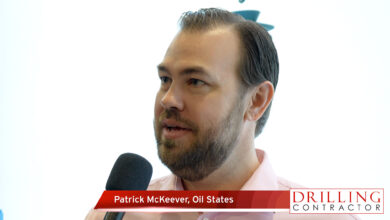HPHT completions demand wider operating window for equipment, recognition of reservoir parameters
By Linda Hsieh, managing editor

Despite the myriad challenges that the industry faces when dealing with difficult high-pressure, high-temperature (HPHT) reservoirs, a couple of existing factors in HPHT completions are already helping to tilt the balance toward in favor of these completions’ safety and reliability.
First, in most HPHT environments, pressure and flow rates decrease over the life of the reservoir, which means the pressures and temperatures applied to completion equipment will decline even as it ages. “Really the worst stresses on your completions equipment generally occurs early in its life. That means it’s brand-new equipment that you just installed and tested. After that, the stress state on that equipment generally declines,” commented Jim Raney, chairman of the API PER15K Task Group.
Obviously, this works to the industry’s advantage as it tries to increase the reliability of equipment working in HPHT environments, which the PER15K group defines as conditions where pressures exceed 15,000 psi or temperatures exceed 350°F, the same definition used by the US Minerals Management Service.
Another factor that helps to support the reliability of completions equipment is the fact that the industry generally uses a dual-barrier concept for completions. “For instance, you have casing on the outside and tubing on the inside. That’s two barriers,” Mr Raney said. “You have the packer on the bottom that protects the casing tubing annulus, and you have a wellhead on top. You also have a safety valve in your tubing plus a tree.”
He continued: “You also have instruments that tell you if one of your two barriers leaks or has a problem. If one of them fails in some manner, you have a second barrier. Then you can reestablish the two barriers before you go back into production.”
Because the industry doesn’t have a long history of operating in HPHT environments, many are concerned about the risk of failure. Yet Mr Raney, who is also director for engineering and technology at Anadarko Petroleum, points out that the industry does have a record of safely working with 15,000-lb pressures. It’s just that these projects have been relatively few, and most of the equipment used were one-off’s typically with smaller-bore diameters than is needed for today’s applications. “Because statistically we’re increasing the number of (HPHT projects), it’s gotten a lot of press. People are looking back and saying, where’s the history on this?” he said.
Equipment and materials for HPHT also have changed drastically over the years. Even if the industry has data and understanding of a piece of HPHT equipment from the 1960s, that doesn’t mean we truly understand the reliability of equipment built in 2007 or 2008. “That’s why we’re trying to do accelerated life testing in order to predict what the performance of that material will be toward the end of its life,” Mr Raney said, part of the validation process detailed in the PER15K document.
PER15K, which stands for “protocols for equipment greater than 15,000 psi,” comprises three subgroups under its umbrella: The Design Verification subgroup, headed by Earl Shanks, Deepwater Technology Company, consulting for BP; the Design Validation subgroup, led by Khedhar Mellah, Chevron; and the Materials subgroup, under Jim Burk, BP.
Because completion equipment – whether it’s the tubing, packers, safety valves or any jewelry on the wellhead – has to stand for the entire life of the reservoir, it’s absolutely critical to understand your reservoir’s parameters before installing the equipment. “What’s going to happen to the composition of your materials as the pressure declines in the reservoir? And if your flow rate declines, the heat from the bottom of your high-temperature well will dissipate, so the temperatures will change,” Mr Raney said. That could change the thermal efficiency of your materials.

Indeed, most of the challenges in HPHT projects have generally been materials-related. “We don’t have a lot of data on materials,” Mr Raney commented.
Although there are manufacturing industries outside of oil and gas that use 60,000-lb equipment – and Mr Raney is emphatic that oil and gas companies must learn from other industries in order to advance our own – we must remember that those manufacturing processes are controlled and all elements of the process are known.
“But in the oil and gas business, our operating envelope changes as pressure declines in a high-pressure or high-temperature reservoir. For example, water vapors fall out below a certain temperature or pressure, and different chemical reactions can occur. We need a wider window than other industries.”
According to Mr Shanks, who has been involved with API’s HPHT project since its inception in late 2004, the PER15K document is a novel concept for the API because it doesn’t address specific equipment components. “We’re attempting to address the full scope of drilling, completion, intervention and production equipment, and we’re trying to address it through a systems approach. … Because the loads (in HPHT wells) are so large, you can’t study individual components by themselves. You have to look at the whole system and see what the total system loads are,” Mr Shanks said.
He continued: “It’s absolutely critical for the industry to have reliable designs that can withstand not only extreme temperatures and pressures but also the properties found in produced fluids or completion fluids, Mr Shanks said. For example, some completion fluids that are used to lower temperatures in standard wells can’t be used in HPHT wells because its properties will be broken down or changed.
That’s just one example illustrating that normal rules of the game don’t apply when it comes to extreme temperatures. “Up to about 300° to 350°, there’s a fair amount of experience with equipment presently designed in the oilfield. When you get above 350°, that’s where the properties change for a lot of the common materials we use. Some will lose 5% to 7% of their strength, and that needs to be taken into account when designing your equipment,” Mr Shanks said.
Another problem is that many of the world’s labs can’t fully test these materials to the same pressure/temperature conditions as they will see in the field. “You test as closely as you can to those conditions, but it may require that you only test so far, then use that data to do a computer simulation beyond that. … An example is the subsurface safety valve for a well that’s flowing 25,000 bbl/day of oil. No test facility in the world has that pumping capacity at that pressure so you can test (a valve) that has to be shut-in in an emergency,” Mr Shanks said.
Hydrogen embrittlement needs to be considered in any HPHT design. At pressures greater than 15,000 psi, sour service environment can be attained with very small amounts of sour gas that may be present but can’t be measured. “You have to design for a sour-service environment,” Mr Shanks said. “You have to look at using corrosion-resistant alloys or other materials in your production equipment. … It’s a whole new planning process for the equipment because you can’t measure the two or three parts per million that would make the fluid or gas sour.”
Mr Raney believes that the vast majority of the findings documented in the PER15K document are already being used by the industry. Moreover, most of the gaps identified were “editorial” in nature. “For example, they’ve got a procedure for the approval of a flange, but they didn’t put a 15,000- or 20,000-psi flange in their table. … A lot of the standards were written when no one anticipated 20,000- or 30,000-lb equipment,” he said.
The PER15K group hopes to have a draft of its technical report out for initial balloting by May 2010. Once approved, it will go out to each of the committees for specific components like wellhead or packers. They will be able to study this report, compare it with existing standards for their specific components, then revise their standards for HPHT.




